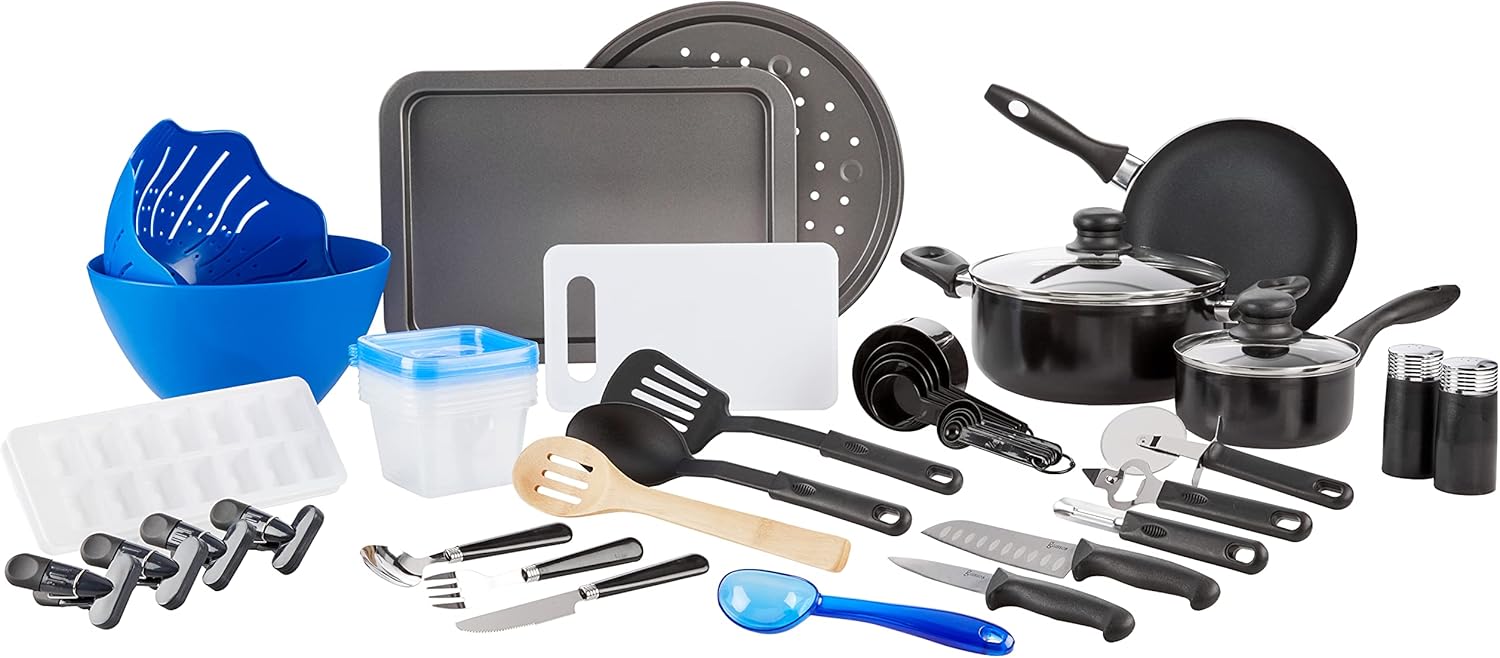






Price: $71.99
(as of Apr 07, 2025 09:15:05 UTC - Details)
What’s the Best Cookware Material? A Comprehensive Guide
Introduction
When it comes to cooking, the choice of cookware material can make all the difference. Whether you're a seasoned chef or just starting your culinary journey, understanding which cookware material is best for your needs is essential. In this article, we'll explore various cookware materials, such as stainless steel, cast iron, non-stick, and more, while answering the question, "What's the best cookware material?" We'll also delve into long-tail keywords like "best cookware for beginners" and "eco-friendly cookware options," helping you make an informed decision.
Understanding Cookware Materials
Stainless Steel Cookware: The Versatile Choice
Stainless steel cookware is one of the most popular options in kitchens worldwide. It’s known for its durability and resistance to rust and staining. If you’re asking yourself, “What’s the best cookware material for everyday use?” stainless steel is a top contender.
- Benefits: It heats evenly, is dishwasher safe, and doesn’t react with acidic foods, making it a safe choice for cooking anything from pasta sauces to stir-fries.
- Drawbacks: However, it doesn’t have non-stick properties, so you might need a little oil to prevent sticking.
For those who prioritize longevity and versatility, stainless steel cookware is often the best choice.
Cast Iron Cookware: The Traditional Favorite
If you’re looking for cookware that can withstand high temperatures and last a lifetime, cast iron is your best bet. This material has been used for centuries and is a favorite among many chefs.
- Benefits: Cast iron retains heat exceptionally well, making it perfect for frying and baking. It's also naturally non-stick when seasoned correctly.
- Drawbacks: The downside is that it requires more maintenance and can be heavy to handle.
For those who love slow cooking or baking, cast iron is undoubtedly one of the best cookware materials available.
Non-Stick Cookware: The Easy Cleanup Option
For many home cooks, non-stick cookware is a must-have due to its convenience. If you’re searching for the “best cookware for beginners,” non-stick options are incredibly user-friendly.
- Benefits: Food slides off easily, which makes cooking and cleaning a breeze. It’s excellent for cooking delicate foods like eggs or pancakes.
- Drawbacks: However, non-stick coatings can wear off over time and may not be suitable for high-heat cooking.
For quick meals and easy cleanup, non-stick cookware is an excellent choice, especially for those just starting out in the kitchen.
Copper Cookware: The Professional’s Choice
Copper cookware is often associated with gourmet cooking. If you're interested in high-end kitchen gear, you might be wondering about the benefits of copper.
- Benefits: Copper heats up quickly and distributes heat evenly, allowing for precise temperature control. It’s often favored by professional chefs for sauces and delicate dishes.
- Drawbacks: Copper requires regular polishing to maintain its appearance and can be quite expensive.
For those who want to elevate their cooking experience, investing in copper cookware can be worthwhile.
Eco-Friendly Cookware: The Sustainable Option
In today’s world, many home cooks are seeking eco-friendly cookware options. If you're passionate about sustainability, this is a vital area to explore.
- Benefits: Eco-friendly cookware is generally made from natural materials and often free from harmful chemicals. Brands are increasingly offering options that are both sustainable and effective.
- Drawbacks: However, they can sometimes be more expensive and may not perform as well as traditional options in certain situations.
If you’re committed to reducing your environmental footprint, eco-friendly cookware is a great choice.
Ceramic Cookware: The Health-Conscious Choice
Ceramic cookware has gained popularity in recent years, especially among health-conscious individuals. If you're looking for the “best cookware material for health,” ceramic might be what you need.
- Benefits: It’s free from harmful chemicals and provides a non-stick surface without the use of synthetic coatings. It’s also visually appealing with various colors and designs.
- Drawbacks: Ceramic can chip or crack if not handled carefully, and it may not be as durable as other materials.
For health-focused cooking, ceramic cookware offers a great alternative to traditional non-stick options.
Conclusion
In summary, when considering "what's the best cookware material," it’s essential to think about your cooking style and needs. Stainless steel, cast iron, non-stick, copper, eco-friendly, and ceramic each have their unique advantages and disadvantages. Whether you're a beginner in the kitchen or a seasoned chef, knowing the pros and cons of each material can help you make informed decisions. Choose wisely, and you’ll enjoy a more satisfying cooking experience. Happy cooking!
59-Piece Set includes (1) Each: 4-Quart Dutch Oven w/Lid | 1.0-Quart Sauce Pan w/Lid | 8.65" Fry Pan | 13" Steel Cookine Sheet | 12" Round Pizza Pan | 9" X 9" Square Colander | 8" X 6" Plastic Cutting Board| 5" Santoku Knife | 3" Pairing Knife| 7-Piece Kitchen Tools (Slotted Spatula, Solid Spoon, Bamboo Turner, Pizza Cutter, Peeler, Bottle opener, Ice Cream Scoop) | PP Mixing Bowl | 10-Piece Covered Storage Set | 2-Piece Ice Cube Trays | 10-Piece Measuring Spoons and Cups | 12-Piece Flatware Set (4-Each: Knives, Forks, Spoons) | Salt and Pepper
Non-stick interior for low fat cooking and easy clean up
Stay-cool handles promote safe transport; Hanging holes for storage
Tempered glass lids with stay-cool knobs help keep in heat, moisture, and nutrients
Dishwasher-safe
